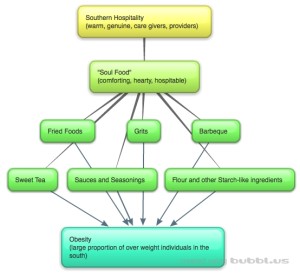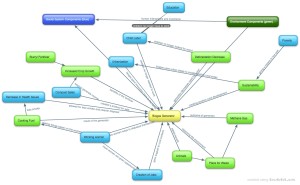In 250 words or less, discuss a situation in history that portrays the dangers of biodiversity loss and how this effects the environment and humans.
In Ireland between 1845- 1852, one million Irish citizens died, while one million more emigrated because of the Irish Potato Famine. The potato was a cheap crop in Ireland and about two thirds of the population was depended on the crop for food. The potato crop was infected with potato blight and it affected the rest of Europe as well. It affected Ireland so harshly because the potato was one of the only crops being grown at the time, known as monoculture. This lack of biodiversity truly hurt the Irish population. Not only was there very few other crops being grown, but even within the potato crops, the genetic variability was low as well. When the potato blight came through Europe, it completely devastated the crops leaving the people of Ireland without food. If the potato crop were more diverse, the Irish population and economy would not have had to suffer. This famine demonstrates the importance of biodiversity, and why we as humans should try harder to increase biodiversity across the globe. Not only did the people of Ireland have to leave Ireland or suffer from starvation, but also the economy fell and the government was given the difficult task of resolving the issues for the sake of the people remaining in Ireland. The lack of biodiversity also affects the animals living in these areas, which is another reason why people should take into consideration what they are planting and making sure to increase variability and biodiversity.
Next, please describe in 250 words or less, what is being done to help prevent biodiversity loss in you hometown and surrounding state. Be sure to connect to course concepts.
In my small hometown of Washington, New Jersey, biodiversity loss is a very big issue. First, there are many farms with huge fields that have made a huge loss of habitat for so many animals. In my town there is also targeted hunting of deer and sometime other small game. This over-harvesting disturbs to natural habitat and the biotic components within it. Also within my area, the population is increasing and it is concerning because lots of animals are loosing their habitat to developments as well as deforestation in preparation for these homes. To combat these issues in New Jersey, the Conserve Wildlife Foundation of NJ has habitat restoration projects. The foundation is protecting numerous areas in New Jersey so they can grow back to their normal habitat. Along with the habitat restoration projects, New Jersey has programs designed for everyone to help out, known as the Backyard Wildlife habitats. They are as simple as building a brush pile in your back yard to provide cover for animals. The foundation also talks about reforestation and how it is critical for reconnecting the fragmented habitats in New Jersey. There are also many state parks in New Jersey that allow for the state to control and maintain healthy habitats within the state. The Voorhees State parks is an example of one of these parks.



